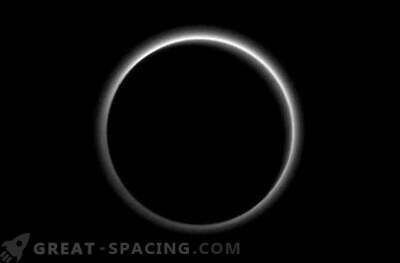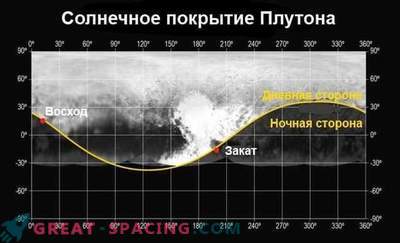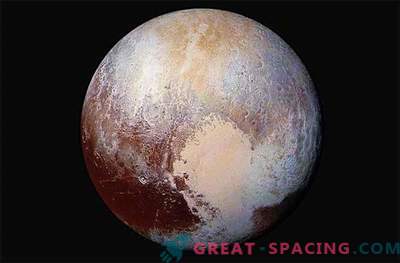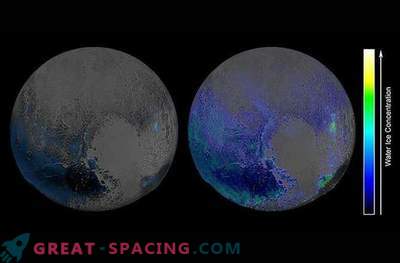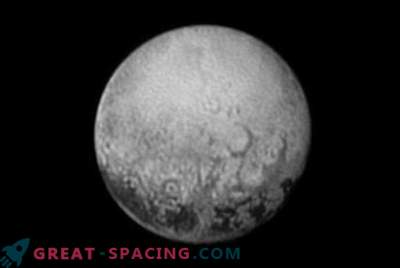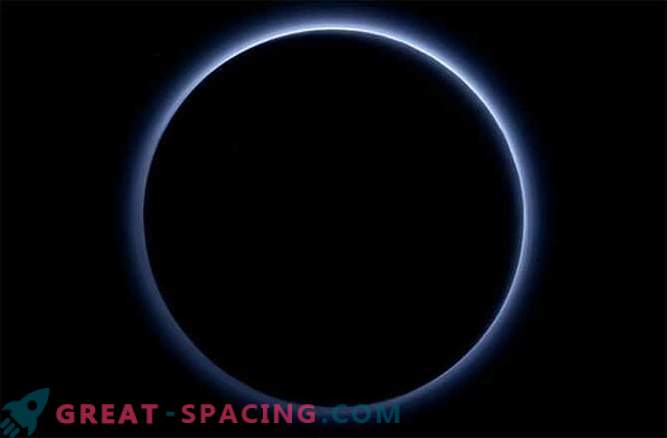
The tiny frozen world at a distance of three billion miles from the Sun is not a place where one would expect to see a shining blue sky, but this is exactly what the New Horizons team (NASA automatic interplanetary station) found in distant Pluto.
Of course, if somehow you could get up on Pluto and look up, the sky above your head would still be black. The atmosphere of Pluto is too thin to actually fill with diffused light. But at sunset and sunrise - between which on Pluto about 3, 2 Earth days - one could see the horizon, illuminated by a beautiful blue glow.
The image above is made from data obtained using the Ralph survey camera, operating in the visible and infrared wavelength ranges (MVIC), when the spacecraft was moving away from Pluto after its historic rendezvous on July 14th. It shows the silhouette of Pluto, illuminated by the Sun, surrounded by a sky-blue multi-layer haze.
“Who would have expected the blue sky in the Kuiper belt? This is great,” said Alan Stern, the principal investigator of the New Horizons mission at the Southwestern Research Institute in Boulder, Colorado.
Here, on Earth, the daytime sky appears blue due to the ability of nitrogen and oxygen molecules to scatter visible sunlight into the atmosphere, an effect called Rayleigh scattering. Shorter blue waves travel more efficiently, coloring the sky blue. On Pluto, 33 times farther from the Sun than Earth, light from our star passes through layers of atmospheric haze in much the same way - except that it does not pass through oxygen or nitrogen molecules, but through tiny particles called Tolins.
Tolins are formed as a result of the decomposition of nitrogen and methane in the atmosphere of Pluto under the influence of ultraviolet radiation from the sun, a complex chemical process that also takes place on Saturn’s satellite Titan. Tolin in themselves are not blue, but gray or red; in the end, they reach a sufficient size and severity to rain on the surface of Pluto and are likely sources of large red spots on it.
In addition to the sky-blue color of the sky, the New Horizons team also identified areas of open glaciers on Pluto.
Earlier it was believed that the glaciers on Pluto are not composed of water, but of a volatile substance like nitrogen.
It is curious that the areas containing traces of water ice in the color image with high resolution are also painted in bright red, was it also due to the impact of tolin from the atmosphere of Pluto?
“I’m surprised that this ice is so red,” says Sylvia Protopapa, a member of the research team at the University of Maryland College Park. "We do not yet understand the connection between ice and the redness of toline dyes on the surface of Pluto."


